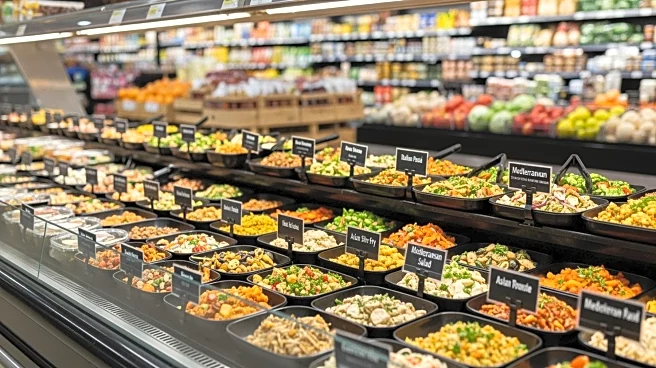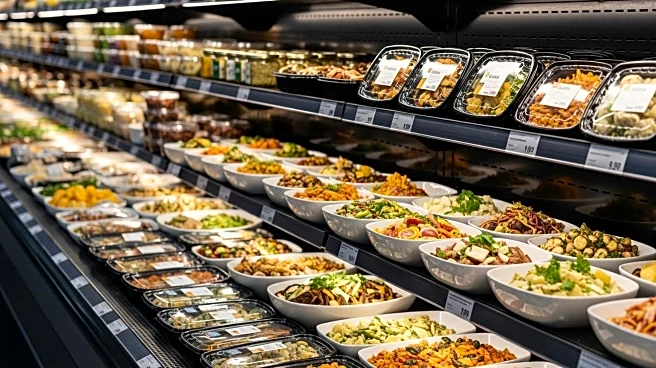What's Happening?
Grocery stores are experiencing increased demand for prepared meals as consumers seek convenient dining options. According to a report by FMI, the Food Industry Association, purchases of grocery foodservice/prepared foods have grown, with $19.6 billion
spent in the 52 weeks ending August 9, marking a 3.7% increase from the previous year. The trend is driven by consumers looking for convenience and affordability, with fully cooked meat, pizza, and olives/marinated vegetables seeing strong sales. Grocery stores are expanding their offerings to include healthier options and diverse cuisine styles, while managing food waste through improved inventory practices.
Why It's Important?
The shift towards grocery-prepared meals reflects changing consumer preferences for convenience and cost-effectiveness in meal planning. As grocery stores compete with restaurants for consumer spending, they are increasingly offering high-quality prepared foods that can be integrated into regular shopping routines. This trend has implications for the food retail industry, potentially reshaping grocery store strategies and impacting restaurant sales. The focus on healthier and diverse meal options aligns with broader societal trends towards health-conscious eating.
What's Next?
Grocery stores may continue to innovate and expand their prepared meal offerings to capture a larger share of the market. As consumer demand for convenience grows, stores might invest in technology and logistics to enhance their foodservice capabilities. The industry could see increased competition among grocery chains to offer unique and appealing meal solutions, potentially leading to partnerships with food brands or chefs to differentiate their offerings.
Beyond the Headlines
The rise in grocery-prepared meals could influence broader food industry dynamics, including supply chain adjustments and shifts in consumer behavior. As grocery stores become more prominent in meal planning, there may be implications for food production and distribution, with potential impacts on local economies and employment in the foodservice sector. The trend also raises questions about sustainability and food waste management, as stores balance consumer demand with efficient inventory practices.













